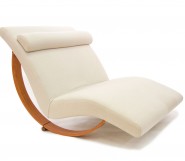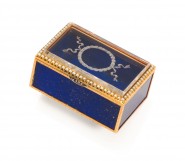Lot #10 - Rover Thomas (Joolama)
-
Auction House:Mossgreen
-
Sale Name:The Alan Boxer Collection of Australian Indigenous Art
-
Sale Date:17 Mar 2015 ~ 6.30pm
-
Lot #:10
-
Lot Description:Rover Thomas (Joolama)
(Circa 1926–1998)
Untitled (Barramundi Dreaming) (1992)
natural earth pigments on linen
60 x 80 cm
bears Waringarri Aboriginal Arts cat. no AP3625 & S3613 verso -
Provenance:Waringarri Aboriginal Arts, Western Australia; Chapman Gallery, Canberra; The Alan Boxer Collection, Canberra
-
Exhibited:Crossing Cultures: Art From the Boxer Collection, Drill Hall, Canberra, May - June 2000, cat. no. 43
-
References:Low, M. and N. Sever, Crossing Cultures: Art from the Boxer Collection, Canberra: Australian National University Drill Hall Gallery, 2000, page 14.
-
Notes:This painting is sold with a Waringarri Aboriginal arts certificate. One of Rover Thomas's iconic images of the Barramundi Dreaming, a subject and landscape he would return to on a number of occasions during his career. The work is also an exquisite example of Thomas' ability to create a palimpsest of histories, where the ancestral and the modern are layered in ochred paint. The site depicted in the painting lies south of Dunham River, near Lissadell Station. It comprises a series of hills and caves: within one of the caves-a cleft in the side of a hill-a white rock is wedged. The ancestral narrative that describes the creation of the site has several versions which vary in detail. In the documentation accompanying this painting, provided by Waringarri Aboriginal Arts, the white rock is Barramundi fat ('dayiwool mooloonggom') that was hidden here by an ancestral Egret ('jarlariny'). To the left of this is a cave ('nawanji'), to the right mountains ('ngarrgaleny'), and below a 'reef', a Kimberley kriol term for a series of lines of rocks, or the side of a hill. Paintings of the same theme by Rover Thomas include Lundari (Barramundi Dreaming), 1985, and Lundari (Barramundi Dreaming), 1986, both in the Holmes à Court Collection (illustrated in Carrigan, B., Rover Thomas: I want to paint, Perth: Holmes à Court Gallery, 2003, cat. nos. 3 and 4 respectively; and in Brody, A., ed, Stories: Eleven Aboriginal Artists, Works from The Holmes à Court Collection, Sydney: Craftsman House, 1997, pages 71 and 72); and Barramundi Dreaming, 1989, in the collection of the National Gallery of Australia (see Thomas, R. et al, Roads Cross: The paintings of Rover Thomas, Canberra: National Gallery of Australia, 1994, pages 14 and 58). According to the description of the first of these paintings, the white mark indicates the place an ancestral Jabiru dropped fish poison in an effort to catch the Barramundi. The poison fell to the ground rather than into the water as in a traditional technique of fishing. The Fish escaped by squeezing its body through a fish trap set by the ancestral beings of the Ngarranggarni (the Gija word for the Dreaming). In the description of the second Holmes à Court painting, the Barramundi lived in a deep pool in the Ord River from where it took flight. As it flew it scraped some scales and its fat on a rocky ridge which can be seen today as a 'large white patch on the hillside' (Brody 1997:74). In the National Gallery's painting, the artist describes the place as the Dreaming site of Lundari the Barramundi. The bird in this version is an Emu who drops the Barramundi at this place which is now the site of the Argyle Diamond Mine, the largest of its kind in the world (Thomas 1990:58). The fish's scales equate to diamonds. Another painting by Rover Thomas, Jumbala Hill, 1985, in the Holmes à Court Collection (see Carrigan 2003: cat. no. 1, and Brody 1997:73), features a similar composition to Untitled (Barramundi Dreaming), 1992, and Lundari (Barramundi Dreaming), 1986, but depicts a different subject. Wally Caruana
-
Estimate:A$30,000 - 50,000
-
Realised Price:
-
Category:Art
This Sale has been held and this item is no longer available. Details are provided for information purposes only.










